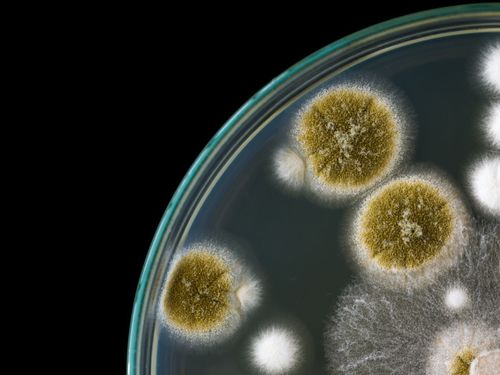Radiation Eating Fungus – The Key to Space Travel?
Sep 19, 2023 · 2 mins read
0
Share
This fungus thrives in the radioactive waste of the Chernobyl nuclear reactor, eating the radiation to survive. Now, it could be the key to space travel and colonising other planets. This is the story of radiotrophic fungus.
Save
Share
On 26 April 1986, an explosion occurred at the Chernobyl Nuclear Power Plant near Pripyat, Ukraine, the largest ever of its kind. In the decades since, plants and animals have returned to the area despite high levels of radiation. But they aren’t all.
Save
Share
While some forms of life exist there despite the radiation, it has now been found that some kinds of fungi actually exist because of the radiation, using it as an energy source enabling them to feed and grow, called radiotrophic fungi.
Save
Share
These fungi have been found to have their hyphae, the tendrils that collectively make up the mycelium, actually grow towards the radioactive graphic resulting from the disaster, rather than away from it. Scientists don’t know how.
Save
Share
In further research conducted, these kinds of fungi have been found to increase in biomass and accumulate acetate faster in an environment with radiation levels 500 times higher than what’s found in the normal environment. Radiation doesn’t harm it, it helps it thrive.
Save
Share
Another important factor in this mystery is the presence of melanin in the fungi, and the benefits this has. It has been found that fungi rich in melanin have also been discovered in the cooling water of other nuclear reactors.
Save
Share
This process of using radiation and melanin to create energy has been termed radiosynthesis, and is believed to be roughly a similar process as anaerobic respiration. How it all works exactly is still a mystery for scientists researching the fungi.
Save
Share
Melanin can absorb electromagnetic radiation, including light, which means these fungi are protected from high levels of ionising radiation, helping it survive in more extreme environments, such as in the damaged Chernobyl reactor.
Save
Share
One other extreme environment where this fungi can thrive on radiation is in space. Experiments have been taking place aboard the International Space Station to test whether it was possible for the fungi to protect against radiation there.
Save
Share
It found that, once the fungi was mature, it could significantly reduce the levels of ionising radiation present. Estimates indicate that a 21cm thick fungal layer could significantly deflect the annual amount of radiation absorbed on the surface of Mars.
Save
Share
0
